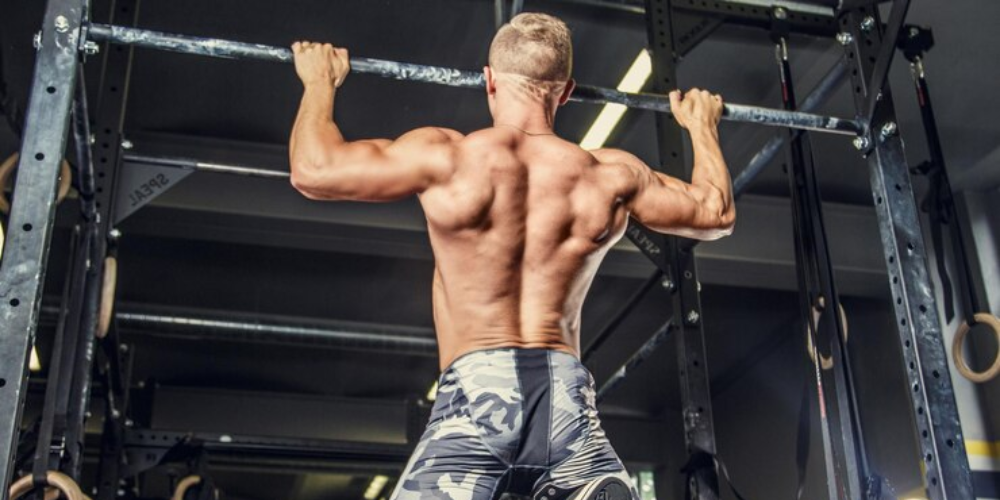
Best Calisthenics Back Workout Routine for Building Muscle

When it comes to developing a strong, defined back, calisthenics offers a potent alternative to traditional weightlifting. Often overshadowed by the popularity of dumbbells and barbells, calisthenics deserves more recognition for its effectiveness in sculpting the upper body. By leveraging your body weight, you can achieve impressive back strength and muscle definition without ever touching a weight. Curious about how?
Read on to explore the best calisthenics back workout routines, discover essential exercises, and learn how to maximize your gains.
Understanding Calisthenics Exercises
Calisthenics involves using your body weight as resistance to build strength and muscle. By adjusting grips, angles, and body positioning, you can vary the intensity and target different muscle groups. The beauty of calisthenics lies in its versatility and accessibility. All you need is a bit of space and minimal equipment to get started.
Do You Need Equipment for a Calisthenics Back Workout?
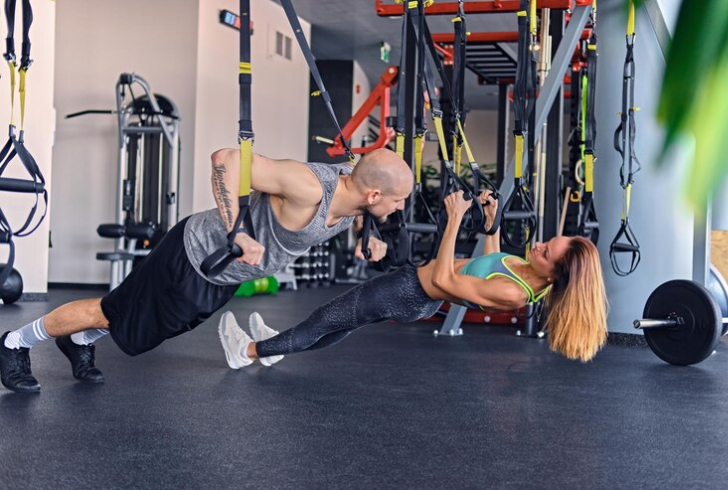
Freepik | fxquadro | Calisthenics uses body weight and resistance bands, with intensity adjusted by grip or added weights.
While calisthenics minimizes the need for equipment, having a few key pieces can enhance your workout. For an effective back workout, consider these essentials:
- Pull-Up Bar – Ideally, a high bar from which you can hang freely. If space is limited, a lower bar will still work, though the exercises will be more challenging.
- Shorter Bar – A bar set about 3 feet off the ground is useful for various row exercises. Many parks have such bars, making them an excellent resource.
- Rope or Climbing Object – A rope, tree, or pole can add variety and intensity to your workouts.
- Sturdy Object for Foot Rest – This can be used for elevated exercises to increase resistance.
- Resistance Band – Optional, but it can intensify your workouts and help with progression.
If you don’t have access to these specific items, get creative with household alternatives or explore our recommended calisthenics equipment for your home gym.
The Best Calisthenics Back Workout Routine
For optimal results, perform these calisthenics back workouts 2 to 3 times a week. The key is to ensure sufficient volume, which is crucial for muscle growth.
Here’s a breakdown of two effective workout sessions:
Calisthenics Back Workout Session A
- Pull-Ups (Harder Progression) – 5 sets, RPE 8
- Chin-Ups – 5 sets, RPE 8
- Australian Rows – 5 sets, RPE 8
Calisthenics Back Workout Session B
- Chin-Ups (Harder Progression) – 5 sets, RPE 8
- Pull-Ups (Easier Progression) – 5 sets, RPE 8
- Australian Rows (Overhand Grip) – 5 sets, RPE 8
Progressions & Rep Schemes
Adapt your workouts based on your fitness level. Aim for 5 sets of each exercise, adjusting the reps as needed. Here are some rep schemes to consider:
- 1,1,1,1,1
- 1,1,2,1,1
- 1,2,1,2,1
- 1,1,3,1,2
As you progress, increase the number of reps or “max out” during the final set to challenge yourself further.
Benefits of Calisthenics Back Workouts
Beyond building muscle, calisthenics back workouts offer several advantages:
- Improved functional strength – Real-life movements are often bodyweight-based.
- Enhanced body control and coordination – Calisthenics demands precise movements.
- Increased flexibility- Many calisthenic exercises promote flexibility.
- Time efficiency – No need for gym equipment; workouts can be done anywhere.
By dedicating time to a calisthenics back workout routine, you’ll not only strengthen your physique but also develop a well-rounded level of fitness.
Top Calisthenics Back Exercises & Variations
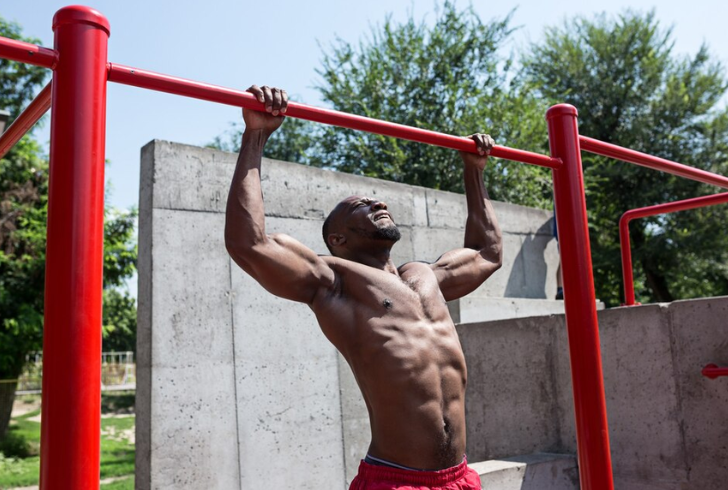
Freepik | master1305 | Pull-ups, performed with an overhand grip, are a cornerstone exercise for developing a powerful back.
1. Australian Row
The Australian row, or inverted row, is a fundamental calisthenics exercise for the back. It mimics a bent-over row but with your bodyweight as resistance.
How to Perform:
- Grab a low bar with an overhand grip, hands slightly wider than shoulder-width.
- Position your body so it is extended at an angle, with feet out in front and torso parallel to the ground.
- Start in a dead hang, pull your body towards the bar, and focus on squeezing your shoulder blades together.
- Variations include wide grip, one-arm rows, and underhand rows to target different muscle groups.
2. Chin-Ups
Chin-ups are performed with an underhand grip, engaging the biceps and upper back more intensely.
How to Perform:
- Grip the bar with palms facing you and hands shoulder-width apart.
- Pull your body up until your chin clears the bar, focusing on bringing the bar to your chest.
- Variations include close grip, chin-ups to one side, and commando chin-ups to enhance strength and endurance.
3. Pull-Ups
Pull-ups involve an overhand grip and are renowned for their effectiveness in building back strength.
How to Perform:
- Grab the bar with hands slightly wider than shoulder-width.
- Pull your body up, driving your elbows downward to engage the lats.
- Variations include wide grip, one-arm, and finger pull-ups to further challenge your muscles.
Calisthenics offers a versatile and effective way to develop a powerful back using just your body weight. By incorporating these exercises into your routine, you can build strength, improve athleticism, and achieve a well-defined back.
Remember to tailor the exercises and progressions to your fitness level, and embrace the creativity of bodyweight training. With consistent effort and the right techniques, you might just find yourself preferring calisthenics over traditional weightlifting for back development.
More inFitness
-
`
Step-by-Step Guide on How to Apply Liquid Blush
Liquid blush is a game-changer for achieving a radiant, healthy-looking complexion. It adds a pop of color that mimics a natural...
June 21, 2024 -
`
How to Do a Diamond Push Ups – Tips and Techniques
The classic push-up is a staple exercise for building upper body strength. But for those seeking an extra challenge, the diamond...
June 12, 2024 -
`
How to Take Care of Wavy Hair? Essential Tips and Tricks
Wavy hair, that in-between zone of straight and curly, can be a source of both frustration and fascination. It boasts beautiful...
June 6, 2024 -
`
What Is the Best Time to Work Out for Optimal Results?
What is the best time to workout to optimal result? While we can’t yet adjust our biological clocks to enhance exercise...
May 31, 2024 -
`
How Nutritious Are Tamales? A Complete Breakdown
Are tamales healthy food? Well, tamales, with their savory or sweet fillings wrapped in masa dough and steamed in corn husks,...
May 24, 2024 -
`
Worst Medicare Supplement Companies Plans- Tips for Spotting & Avoiding
Choosing the right Medicare Supplement plan can feel like navigating a labyrinth. With numerous options and confusing terminology, it’s easy to...
May 17, 2024 -
`
Should You Do Hair or Makeup First on Your Wedding Day?
Every bride dreams of a flawless look on her wedding day. But amidst the whirlwind of planning and preparations, a crucial...
May 11, 2024 -
`
10 Weighted Ball Workout Varieties for Full-Body Toning
Are you ready to supercharge your fitness routine with a workout buddy that’s been around since the days of Hippocrates? Discover...
May 1, 2024 -
`
5 Reasons Why Footballers Wear Bicep Bands
Bicep bands have become an iconic part of a footballer’s kit. While they may seem like just another stylish accessory, these...
April 24, 2024




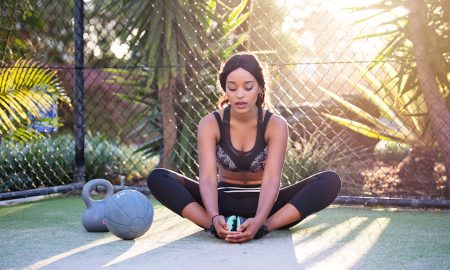







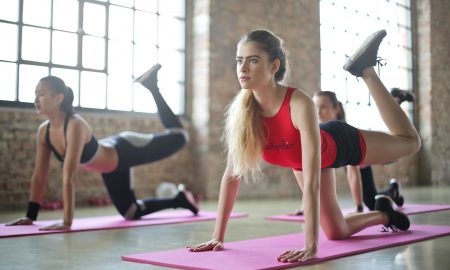


You must be logged in to post a comment Login